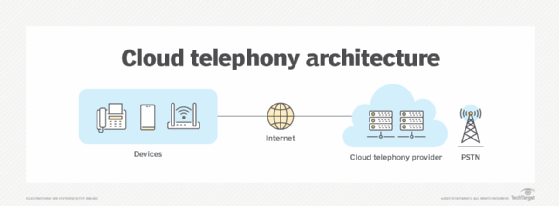
Telephony: Definition, Meaning, and Key Concepts Explained

In today's fast-paced world, telephony has become an integral part of our daily lives, enabling seamless communication over vast distances. The term telephony refers to the technology and systems used for voice communication, allowing individuals to connect and communicate effectively. From traditional landlines to advanced digital systems, understanding telephony is crucial in appreciating how we interact with one another in both personal and professional spaces.
As the landscape of communication continues to evolve, so does telephony. The movement from analog to digital technologies has transformed the way we communicate and interact with devices and services. In this article, we will explore the definition, meaning, and key concepts associated with telephony, highlighting its significance in our interconnected world.
- What is Telephony?
- Understanding the Key Components of Telephony
- The Evolution of Telephony: A Brief History
- Types of Telephony: Analog vs. Digital
- How Telephony Works: The Science Behind Sound Transmission
- VoIP: The Future of Telephony
- Key Terminology in Telephony
- Benefits of Modern Telephony
- Challenges and Limitations in Telephony
- Conclusion: The Importance of Telephony in Today's World
What is Telephony?
Telephony is the technology designed for the transmission of audio over distances, which involves various communication devices and systems. It encompasses a broad range of technologies, including traditional telephone systems, mobile phones, and advanced internet-based communication systems. The primary function of telephony is to facilitate the exchange of voice communications, making it an essential component of everyday interactions.
The term telphony may also refer to the various methods and technologies that enable these audio transmissions. Whether through conventional copper wires, fiber optics, or wireless connections, the goal remains the same: to provide users with a reliable means to send and receive messages effectively. Overall, telephony plays an indispensable role in modern communication, informing and connecting individuals across the globe.
Understanding the Key Components of Telephony
To fully understand telephony, it is crucial to examine its key components. At its core, telephony consists of several vital elements that work together to establish and maintain communication:
- Subscriber stations: These are the devices used by individuals, such as phones, headsets, or VoIP terminals. They are often the interface through which users initiate and receive calls.
- Switching systems: These systems facilitate the connection between different subscriber stations, routing calls through the appropriate channels to ensure successful communication.
- Transmission medium: This refers to the physical pathway that carries the audio signals, which can include copper wires, fiber optics, or wireless technologies.
- Signaling protocols: These are the technical standards used to establish and manage communication sessions, ensuring that both parties can exchange information effectively.
Each of these components plays a crucial role in the overall functioning of telephony systems, allowing users to engage in audio communication effortlessly. Furthermore, the seamless integration of these components has paved the way for innovations in the field of communication.
The Evolution of Telephony: A Brief History
The history of telephony is a fascinating journey that highlights the remarkable innovations that have taken place over the centuries. The invention of the telephone in the late 19th century marked a significant milestone in this evolution. Alexander Graham Bell is often credited with developing the first practical telephone in 1876, paving the way for the widespread adoption of voice communication.
As technology advanced, so did the systems used in telephony. The transition from manual switching operators to automated telephone exchanges in the early 20th century revolutionized the industry by significantly improving call efficiency. Furthermore, with the introduction of analog systems, telephony capabilities expanded, allowing for enhanced sound quality and longer transmission distances.
In the late 20th century, the advent of digital technology ushered in a new era for telephony. Digital switching and the emergence of mobile phones shifted the landscape of voice communication, making it increasingly accessible and convenient for users. These innovations paved the way for the sophisticated systems we rely on today, showcasing how telephony continues to adapt and grow.
Types of Telephony: Analog vs. Digital
Understanding the two main types of telephony—analog and digital—is essential for comprehending how communication systems function.
Analog Telephony
Analog telephony refers to traditional phone systems that transmit voice signals as continuous electrical signals. These systems use a fixed frequency to encode and transmit sound, capturing the natural waveforms of voice. Despite its historical significance, analog technology has some limitations, including susceptibility to noise interference, limited call quality, and less efficient use of bandwidth.
Digital Telephony
In contrast, digital telephony encodes voice signals into binary data, allowing for more efficient transmission over various mediums. Digital systems can compress and transmit data more effectively, improving sound quality while reducing transmission costs. Moreover, digital telephony supports advanced features such as voicemail, call forwarding, and conferencing, making it a popular choice in modern communication.
The shift from analog to digital telephony has transformed the landscape of communication, offering greater reliability, sound quality, and functionality for users worldwide.
How Telephony Works: The Science Behind Sound Transmission
The process of transmitting sound through telephony involves a series of steps that convert voice into electrical signals and back again. Understanding this fundamental process sheds light on how telephony functions:
- Sound Capture: When a user speaks into a phone, the microphone captures the sound waves produced by their voice.
- Conversion to Electrical Signal: The microphone converts these sound waves into electrical signals that represent the audio data.
- Transmission: The electrical signals are then transmitted through the telephony network, utilizing various media such as copper wires, fiber optics, or radio waves.
- Signal Reception: At the other end of the communication chain, another phone or device receives the electrical signals.
- Conversion back to Sound: The receiving device’s speaker converts the electrical signals back into sound waves, allowing the recipient to hear the voice of the caller.
This intricate process demonstrates how telephony bridges the gap between individuals, enabling effective communication across distances. Understanding these scientific principles highlights the complexity and ingenuity behind modern voice communication systems.
VoIP: The Future of Telephony
Voice over Internet Protocol, or VoIP, represents a revolutionary approach to telephony by utilizing the internet for transmitting voice communications. Unlike traditional analog systems, VoIP converts voice signals into digital data packets that can be sent over the internet, providing a more versatile and cost-effective solution for voice communication.
Some key benefits of VoIP include:
- Cost Savings: VoIP often results in significant savings on long-distance calls and international communications compared to traditional phone services.
- Enhanced Features: Users can access a wide array of features such as call forwarding, voicemail-to-email, and video conferencing, enhancing the overall communication experience.
- Scalability: VoIP systems can easily scale as businesses grow, making it a popular choice for organizations of all sizes.
As technology continues to advance, VoIP is expected to play an increasingly significant role in shaping the future of telephony. This evolution reflects the ongoing transformation of communication systems, catering to the ever-changing needs of users.
Key Terminology in Telephony
To fully grasp the concepts of telephony, familiarizing oneself with key terminology is essential. Some important terms include:
- Bandwidth: Refers to the maximum rate of data transfer across a communication channel, which can affect sound quality in telephony.
- Latency: The delay between sending and receiving a signal, crucial for maintaining smooth conversations.
- Codec: A device or software that encodes and decodes audio signals, playing a vital role in VoIP and digital telephony.
Understanding these terms is fundamental for individuals seeking to navigate the world of telephony and make informed decisions regarding their communication options.
Benefits of Modern Telephony
Modern telephony offers a plethora of benefits that enhance communication for individuals and businesses alike. Key advantages include:
- Improved Sound Quality: Advancements in technology have led to better sound transmission, resulting in clearer and more reliable conversations.
- Accessibility: The prevalence of mobile phones and smartphone applications has made telephony accessible to a broader audience, enabling communication regardless of location.
- Integration with Other Services: Modern telephony allows for seamless integration with messaging, video conferencing, and other communication methods, enhancing user experience.
These benefits highlight the continued importance of telephony in our lives, underscoring its role as a vital communication tool.
Challenges and Limitations in Telephony
Despite the many advantages of modern telephony, there are challenges and limitations that users should consider. These include:
- Technical Issues: Breakdowns in communication systems, such as dropped calls or network congestion, can disrupt conversations.
- Security Concerns: With the rise of VoIP and internet-based services, protecting sensitive information from cyber threats has become increasingly important.
- Dependence on Power and Internet: Many telephony systems require a constant power supply and internet connection, making them vulnerable during outages.
Recognizing these challenges can help users better prepare and adapt to the ever-evolving world of telephony.
Conclusion: The Importance of Telephony in Today's World
In conclusion, telephony plays a pivotal role in shaping our interconnected world by facilitating communication across vast distances. From its origins in the late 19th century to the advent of digital systems and VoIP, the evolution of telephony demonstrates its enduring significance in daily life and business interactions. By understanding the key components, types, and terminology of telephony, users can navigate the vast array of communication options available today.
Furthermore, while modern telephony offers numerous benefits, it is also important to recognize the challenges and limitations it presents. By staying informed about advancements in telephony and being aware of potential obstacles, users can make informed decisions regarding their communication needs. Ultimately, understanding and embracing telephony is essential for thriving in today's fast-paced, interconnected world.
Did you find this article helpful? Telephony: Definition, Meaning, and Key Concepts Explained See more here Education.
Leave a Reply






Related posts